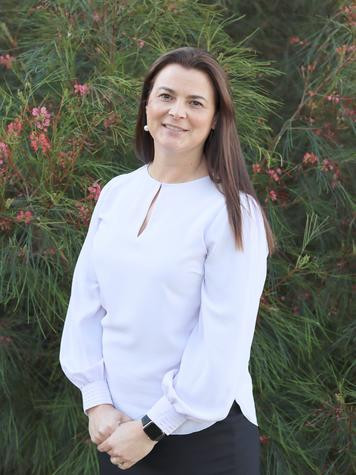Council
5 July, 2024
Council budget paints a bleak picture as local governments try drinking from an empty cup
While many residents are not surprised by this year's increase in rates and charges, many are questioning the long-term sustainability of such increases - a question being shared by those in Hindmarsh Shire Council.

Chief executive Monica Revell recently submitted a letter to the House of Representatives Standing Committee on Regional Development Infrastructure and Transport regarding the financially “grim” future facing many local councils.
“As a small rural council, Hindmarsh Shire Council faces many sustainability challenges,” the letter said.
“Hindmarsh Shire Council is the third largest local government area in the Wimmera Southern Mallee (after West Wimmera and Buloke), comprising 7,500 sq kilometres, and has the second smallest population.
“At the 2021 Census of Population and Housing, Hindmarsh had a population of 5,698.
“Hindmarsh Shire Council provides over 100 services to the community, including community services, waste management, recreation facilities, libraries, planning, building, and public parks.”
In her letter, Ms Revell went on to explain more about the financial position of Council, stating that the annual rates cap was reducing their ability to meet the maintenance of the area’s infrastructure, and resulting in a decline in service levels and new projects.
“Hindmarsh is heavily reliant on (federal and state) grants, including the Financial Assistance Grants, to deliver services and maintain necessary infrastructure required by the community,” it read.
“Grants often require a contribution from Council, and finding this contribution is becoming extremely difficult due to low rate revenue, resulting in grant applications not being submitted for much needed infrastructure projects.”
But, Ms Revell continued, local residents are in no better position to absorb the rising costs.
“Twenty-eight per cent of residential properties within the Shire have been approved under the Rates Concession Program,” she wrote.
“There are few opportunities for Council to increase revenue, as additional fees and charges are inhibitors to inclusion and accessibility for our financially vulnerable community.”

"Council’s long term financial plan paints a grim picture of the future for Hindmarsh with continual deficits and diminishing cash."
Ms Revell pointed out that the largest drain on funds is upgrading and maintaining all of the roads they are responsible for, comprising 573 kilometres of sealed roads, 845 kilometres of gravel roads (all-weather) and approximately 1470 kilometres of earth roads (dry weather only, not maintained to an all-weather standard), six bridges, and “a significant number of large culverts”.
“Despite our best efforts, maintaining vital infrastructure remains a constant struggle impacted by climate changes and increased heavy vehicle usage,” Ms Revell said in her letter.
“Council’s road network is the equivalent of driving from Nhill to Darwin, with less than two residents per kilometre of road network, but without the commensurate financial resources to maintain, renew, and upgrade.”
Ms Revell also pointed out how outdated the local roads are, and how the shifts in agricultural focus over time, along with the technological advances are stressing the local infrastructure which would soon affect more than just our region.
Hindmarsh Shire Council recorded an estimated regional economic output of $721.5million in 2022 - the majority of which relies on the agricultural sector.
“Agriculture is one of the largest employers within Hindmarsh, both directly and indirectly, and contributes significantly to the community both economically and socially, but the transportation of food and fodder requires well-maintained infrastructure,” Ms Revell wrote.
“Changes to farming practices and increasing the legal axle loads for trucks has resulted in a significant increase in the tonnage of goods carted off-farm, with a corresponding effect on the road pavement.
“Increased sizes of farming machinery means agricultural businesses are continuously seeking expansion of current road and bridges, but with the current level of funding, Council is struggling to fund asset renewal, so asset expansion often takes lower priority.
“This eventually impacts the agricultural productivity of the nation.”
As well as outdated and ageing roads, council is also facing the issue of outdated assets needing improvements to meet current legislation and standards, or general maintenance.
“Council has a significant number of infrastructure assets nearing or at end of life, including four swimming pools,” Ms Revell wrote.
“Twenty per cent of the approximately 199 buildings and structures within Hindmarsh are in average to poor state, and Council does not always have the required finances to continually maintain and bring the buildings up to safe standards for community use.”
Ms Revell finished by pointing out how the shift of responsibilities once overseen by state and federal governments to local governments, with no corresponding funds or resources - including staff and assets - was compounding the issues Council already faces.
“Costs are increasing without adequate funding and resources, augmenting the existing shortfalls as existing resources are spread over additional programs.
“It is important that there are adequate funding mechanisms from both federal and state governments.
“This ensures that local governments, particularly those in rural areas with small rate bases and significant infrastructure assets, can deliver vital services for their communities.
“It also ensures those who cannot afford the cost of living in metro areas have the capacity to live in rural areas without being further disadvantaged with high rates and charges, and reduced services.”
A copy of Ms Revell's letter is available to be read on page 69 of council's June 26 meeting minutes.